Matador Network's Blog, page 721
January 6, 2021
Newest national park in the US
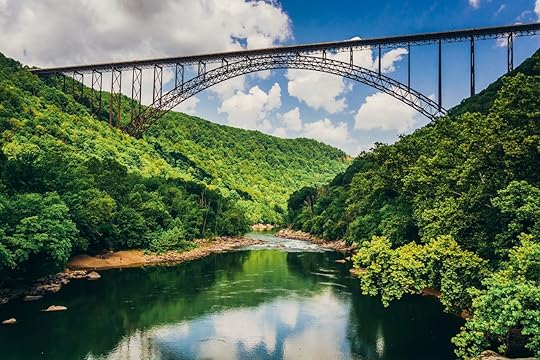
The United States’ newest national park is the New River Gorge in West Virginia, formerly a national river. It’s been upgraded to a national park and preserved thanks to last month’s COVID-19 stimulus package. It will be the 63rd national park in the country, and the 20th preserve.
The park is over 70,000 acres, along 53 miles of whitewater flowing through sandstone cliffs, and located an hour from Charleston, WV. The park and preserve will include three locations already managed by the National Park Service, including New River Gorge itself, the Gauley National Recreation Area, and the Bluestone National Scenic River.
The Appalachian canyon is known as a rock climbing and whitewater rafting destination, as well as for having several popular hiking trails. The park has over 1,500 rock climbing routes, Class IV and V whitewater rapids for truly adventurous and adrenaline-seeking visitors, and mountain biking trails. It’s also home to wildlife like white-tailed deer, river otters, and bald eagles, and flora like West Virginia’s white and pink state flower and the great rhododendron. 
More like thisParks + WildernessThe best national parks for every type of traveler
The post The newest US national park is in West Virginia appeared first on Matador Network.

The best vegan snacks
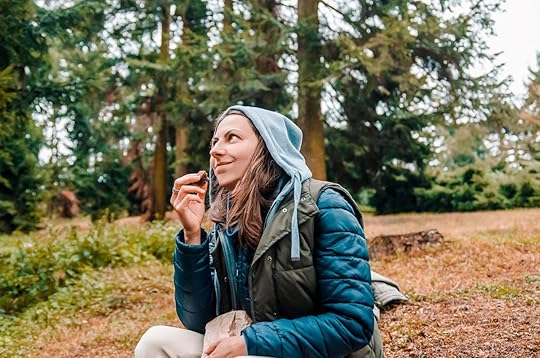
If you are headed outdoors and want some plant-based nutrition to fuel your adventures, you no longer need to settle for that bag of granola or a few fingerfuls of dried fruit. You can and should eat well outside, because part of the fun of burning calories in the outdoors is refueling the tanks with tasty provisions. Try these vegan energy snacks and outdoor meal options to keep charged and healthy while hiking, camping, biking, or otherwise on-the-go.
For day hikes, bike rides, and basic single-day excursions
When departing on a day hike or bike ride, the key to success is quick power. You need foods that will provide a boost in energy and much-needed calories while leaving you feeling loose and ready instead of lethargic and bloated. This starts with quick-grab items that should be kept in your backpack at all times, like Vega Protein Bars and Clif Bars. Get in the habit of keeping a box of one or the other in your kitchen and re-stocking your pack post-excursion. Evo makes a great hemp protein bar that’s kind of like eating a cookie but that a dietitian will actually approve of, with 12 grams of protein in each bar.
Trail mix is another source of quick energy with the benefit of not being “processed” into a bar, making it slightly more natural in most cases. However, if you’re on a bike, it’s harder to eat loose foods like almonds with one hand, so they’ll require a dedicated stop. If you do opt for trail mix, aim for a mix that’s high on nuts and dried fruit, and lower on the processed carbs — since, as delicious as bagel chips are, they don’t provide the energy boost.
If you want the energy of trail mix in a form that’s easier to eat quickly, you can make almond energy balls at home. You’ll find plenty of recipes online, but they are ridiculously easy to make. Just mix together almond butter with healthy items like chia seeds, flax meal, and/or oats; toss in some vegan dark chocolate chips; sweeten it all with maple syrup or chopped dates; and then roll them into bite-sized balls. You can even cover them in shredded coconut, if you want.
For a savory snack on your shorter excursions, try vegan jerky, which are built from vegan proteins like tempeh. Some specialty food and nutrition shops sell Louisville Vegan Jerky, or you can buy it online. No matter how you get it, keep a bag in your pack or in your kitchen, and grab a few pieces to go before heading out.
Back at home, make a protein shake with one of the many vegan protein powders available at nutrition stores, natural grocery stores, or online. Garden of Life Plant-Based Protein Powder mixes easily with water and contains 30 grams of protein designed to help your body recover from strenuous exercise. If you need an entire meal in shake form, try Ka’Chava, which includes all of the necessary proteins and carbs to keep you moving.
For long bike rides, backpacking, and overnight trips
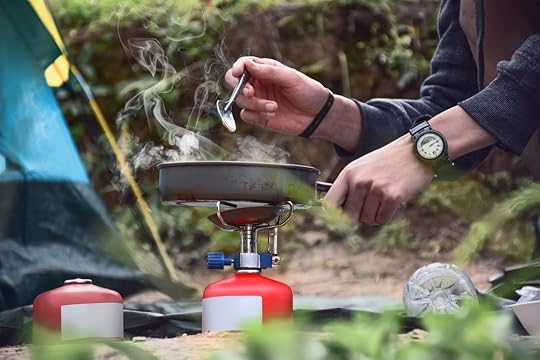
Photo: anusorn thongpasan/Shutterstock
For day-long bike rides or overnight backpacking/bikepacking trips, you’re going to need at least a couple of full meals in addition to the snacks listed above. Refueling after extended exercise is especially important when you’re headed back out the following morning, so don’t be shy about cooking up a feast at your campsite. Patagonia Provisions has vegan options that boil over a fire or gas burner, as do other campfire food products available at your local REI or outdoor provisions retailer.
On days of extended exercise, maintaining carbohydrate energy — known as glycogen — is critical to success. Your body stores enough for an hour or two of moderate to heavy endurance, and after that, it begins to burn fat as an energy source. Fat metabolizes slowly, which doesn’t work as well with exercise; as we’ve noted already, rapid energy is key. The solution to this is energy gels, a quick and easy to pack go-to of which there are numerous vegan options. Vega Sport and Clif Bar make vegan energy gels, as does GU Energy. Stock enough that you can consume one per every hour of heavy exercise, or every two to three hours of moderate exercise.
But there’s no need to rely solely on packaged meals, especially if you’re backpacking with a gas burner and some simple camp cookware. If you have a pot, water, and a few basic ingredients, you can whip up a gourmet camping meal in less time than it takes to down a bottle of kombucha. Bagged whole wheat spaghetti noodles fit nicely into backpacks as they’re long and skinny, and it doesn’t really matter if they snap. Pasta with red lentil sauce is easy to make and full of nutritious power (and it’s delicious), but any quick sauce you prefer and whole wheat noodles provide healthy carbs and calories, and you can kick up the protein content by adding your favorite veggie pattie, beans, or lentils.
Daal soup is an easy win as well, and you can get packaged varieties at your local grocer or order online. For this and other hearty soups, look for options that aren’t condensed, i.e. you won’t need to add water, and that don’t require cold storage prior to opening.
Winter sports and cold weather solutions

Photo: Vitalii Nesterchuk/Shutterstock
Warm meals beckon when the snow falls. This is true whether you’re heading out for a couple of hours on the snowshoes or winter camping — though if you are camping, be sure to bring the burner and a pot because hot meals are essential. And you’ll also need snacks easy to grab with those mittens on if you’re skiing or snowshoeing. Keep peanut butter on hand for on-the-go munchies, whether that be a PB&J, trail mix, or in bar form, as well as other high-calorie, high reward snacks like dried fruits and plant-based protein bars.
Noodle dishes go well with cold weather camping, and you can channel warmer climates by cooking Udon noodles with tofu and veggies, tossed in tamari or your favorite salty sauce from further east. Dehydrated bean dip or hummus works well for campsite appetizers. In the morning, packaged oatmeal heats up quickly and doesn’t take much room in the gear setup.
And here’s the kicker: whether you’re at a campsite or back in the comfort of your kitchen, top off the day with vegan hot chocolate. It can be as simple as a trip to the grocery store for a package of non-dairy Swiss Miss or as gourmet as crafting your own cup from vegan cocoa powder. If you’re truly hardcore and down for some experimentation, you can even melt some dark chocolate in water and/or your favorite nut milk on the camp stove, and indulge Oaxaca style. Share a sip of this deliciousness with your crew and they may never go back to cow-milk-based hot chocolate again. 
More like thisOutdoorCrush your sports and training goals with these plant-based nutrition tips
The post The best vegan energy snacks and meals for outdoor adventuring appeared first on Matador Network.

Hotel room inspired Queen’s Gambit

No one could have predicted that a show about chess would capture the hearts of so many people who probably don’t know how to play chess — but that’s what makes The Queen’s Gambit such a great series.
The popular Netflix show has not only inspired people to learn the game, but also inspired this hotel to give itself a Queen’s Gambit makeover.

Photo: 21c Museum Hotels/Facebook
The 21c Museum Hotel in Lexington, KY, which is also the home of the protagonist in the show, just unveiled a room inspired by the show’s mid-century modern aesthetic. The hotel describes the Harmon Room as “a retro time capsule of American mid-century modern design inspired by the Lexington-based Netflix series.”
The design was the brainchild of local designer Isabel Ladd, Mid-Century Design League of Lexington founder Lucy Jones, and Alex K. Mason of Ferrick Mason Inc., and also features massive chess pieces suspended from the ceiling.

Photo: 21c Museum Hotels/Facebook
There’s also a stocked bar cart, a gold peacock art piece hanging over the bed, rare books, an itinerary of places to visit in the city inspired by the show, and of course, a chess set.

Photo: 21c Museum Hotels/Facebook
The room is only available to book for a limited time, and you have to call the hotel for price and booking information. 
More like thisWhere to Stay7 desert hotels where you can truly get away from it all
The post You can now stay in this hotel room inspired by ‘The Queen’s Gambit’ appeared first on Matador Network.

Luxury hotels offer on-site tests
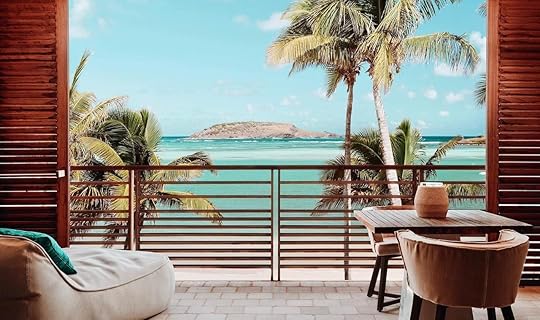
When the W Hotel South Beach underwent its massive renovation in the summer of 2020, it aimed to put itself at the forefront of luxury travel. It changed out the decade-old purple and gray décor for sleek, South Florida all white. It built a sparkling new spa with eucalyptus steam showers. It even put fluffier towels in the bathrooms and changed the brand of its body products.
And, in a sign of the times, the hotel also added its own on-site COVID-19 testing center.
Not so long ago, having an outpost of an upscale restaurant would have sufficed to make the W a major player in the luxury game. But in 2020, guests were far more interested in the COVID testing facility run by Sollis Health.
“People were asking upfront or in email, ‘Is there testing available?’” says W South Beach owner David Edelstein. “So now we’re able to tell people we have in-house testing and follow up capabilities.”
With New Yorkers flocking to South Beach and other warm-weather destinations to escape the winter cold and restrictive lockdowns – and a negative COVID test the only way to avoid a 14-day quarantine when they return home – on-site testing has quickly become a sought-after amenity at luxury hotels. And as the pandemic stretches toward a full year of gripping the country, it may become the competitive advantage that sets luxury leaders apart.
On-site hotel testing provides the luxury of convenience and more

Photo: W South Beach (W South Beach Hotel and Residences)/Facebook
“Five years ago, a meaningful luxury amenity might have been a gift shop or a spa,” says Sabine Heller, chief commercial officer for Sollis Health, the concierge medical service provider running the clinic at the W. “In today’s world of luxury amenities, it’s a testing facility. It’s a sign of the times.”
The Sollis space isn’t just luxe in terms of convenience. To an outside observer, it could easily pass as the W’s spa. Colorful artwork covers the walls and calming music plays in the reception area. Socially distanced patients wait in plush chairs for their turn in one of two swabbing rooms. Edison bulbs light the hallway leading to the discreet testing centers.
“We want any medical experience we create to be stress free and static free,” says Heller. “And we believe the design in this space succeeds in achieving that.”
The testing process is, by all appearances, stress free. Guests can book a test directly through the hotel and have results within 24 hours. The price of the test isn’t included in the room rate, but it is covered by most insurances.
“The demand is natural,” she says. “It’s a logical extension of our environment and climate today.”
On-site testing is also a creative way of using unused space

Photo: Cryptographer/Shutterstock
Though the boutique clinic at the W feels like a medical extension of a luxury vacation, on-site testing can also help hotels make use of meeting space that’s been sitting vacant since the pandemic began. At the Marriott Singer Island Beach Resort and Spa near West Palm Beach, general manager Roger Amidon has been filling an unused ballroom with a team from Helix Medical, which provides COVID-19 tests for the resort’s guests.
“Our ballroom is empty,” he says, “so it’s convenient for us to have these people onsite. Guests can walk down to a meeting space, just off the lobby, and do it in a private area.”
Amidon said he floated the idea of onsite testing during a planning meeting at the beginning of November, and was initially met with crickets and tumbleweeds. But as his team looked ahead — and realized that the bulk of their guests were coming from places like the northeast and Chicago, where negative tests would be required to return home — the concept started to gain traction.
The resort began testing just before the Thanksgiving holiday, offering tests two days a week. It recently expanded to three days, with Helix performing about 20 PCR tests per day. Results come back from a nearby lab in under 48 hours.
“Hygiene is going to be the next luxury,” Amidon says. “This is not a revenue center for me, but a convenience for my guests. And if I can sway our market share by doing this, it’s a win-win.”
Luxury travelers will pay for convenience and peace of mind
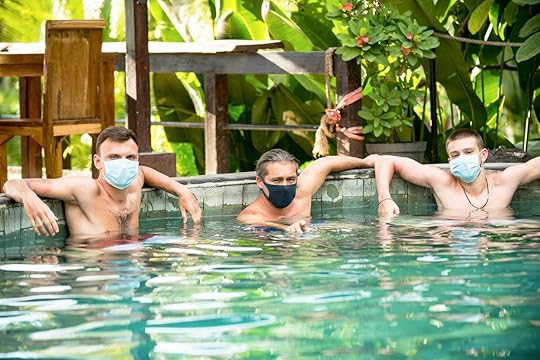
Photo: Igor Chus/Shutterstock
On-site testing isn’t just a competitive advantage. In places where medical infrastructure is limited, it can make the difference between people making the trip or staying home. In St. Lucia, for example, the Coconut Bay Beach Resort secured 1,000 COVID rapid antigen tests, in anticipation of guests from the US who would prefer not to spend their vacations looking for a testing facility before they return home.
“When these requirements came out, there were phone calls and cancellations coming in,” says Coconut Bay CEO Mark Adams. “This was a way to say, hey, we got you covered if you need a test to get back home.”
In what is certainly a hotel special promotion for the times, Coconut Bay offers a free COVID test with any five-night stay. Free breakfast, apparently, is so 2019.
In St. Barts, the Le Barthelemy Hotel and Spa has contracted with a local doctor who makes room calls for guests who need a test, with results available in 24 to 48 hours. In Nassau in the Bahamas, the Grand Hyatt Baha Mar offers on-site rapid antigen testing on arrival, so guests know their results within hours of landing.
“I think it gives the traveling public and discerning guest an extra layer of safety, knowing other guests and (staff) are tested,” says general manager Ulrich Samietz. “That’s a very important part of luxury travel, and I think we’re doing something very innovative that will be valued by the traveling public.”
That value may extend well past the pandemic too. Even once vaccines are commonplace and the need for COVID testing has diminished, the legacy of on-site, concierge medical service may well live on.
“Generally people are looking to spend their money in a way that’s more experiential and more focused on wellbeing,” says Sollis’ Heller as we sit poolside at the W on a 75 degree December afternoon. “There’s been a shift away from consumer goods for a long time and towards wellness experience, self care. We’ve already been on that trajectory for a long time. So this is part of that continuum.”
Heller says Sollis plans to continue using the South Beach location as a clinic as for its members, who mostly live in New York and Los Angeles. It will also serve as an on-site clinic for W South Beach, something owner Edelstein sees not only as a selling point, but as a necessity in the future.
“I see (on-site testing) moving forward as concierge medical care in luxury hotels,” he says. “They may not all be in house, they may be on Zoom. But it’s exploding in terms of popularity, and all luxury hotels will, at some point, have to have concierge medical care available. And I think it’s great to have that available for employees and guests.” 
More like thisAirports + FlyingHow to plan for 2021 travel in the age of COVID, according to 23 travel agents
The post Is on-site COVID-19 testing the new ‘it’ luxury amenity? appeared first on Matador Network.

7 winter experiences in Marquette
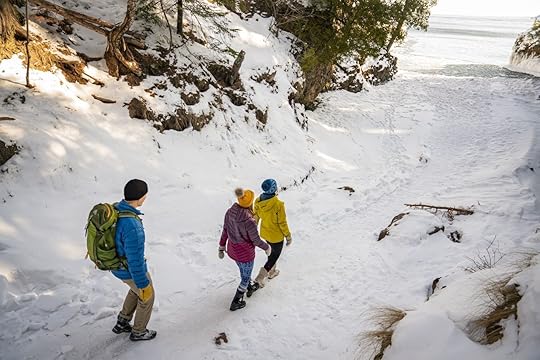
There aren’t many cities in the Midwest sandwiched between sand dunes and national lakeshores, between sea cliffs and waterfalls, between national trails and dense pine forests. In fact, there might just be one: Marquette, Michigan.
In winter, this wild-north landscape somehow comes more alive: Think frozen waterfalls, ice caves, snowshoe trails, ski jumps, speed slides, sleigh rides, even views of the Northern Lights. And all of it comes with built-in social distancing.
“Flyover country” this is not — when you’re ready to travel, here’s what your winter could look like in Marquette.
1. Skiing 100+ miles of Nordic trails
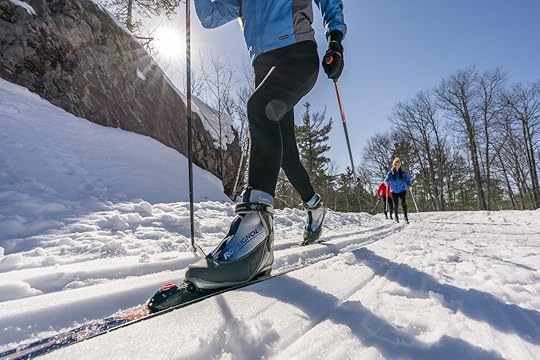
Photo: Aaron Peterson Studios / Travel Marquette
A couple decades ago, Marquette decided it should take cross-country skiing seriously. Today, you’d think it had always been in the city’s blood: Well-groomed trails — over 100 miles! — warming huts, accessible trailheads (with rental options), and plenty of online resources make partaking a breeze, even for beginning skiers and city-slicker newcomers.
The largest trail system in the area is the Noquemanon Trail Network. The northern section — 30+ miles — follows the Dead River along the north side of the city. It’s classified as easy to intermediate, and the trails are flowy, scenic, and always well-marked. The southern section — 45+ miles — is a bit more technical, leading visitors to waterfalls and up to some rocky views. The NTN also runs the in-town Fit Strip, a 1.6-mile easy-access loop that’s lit in the evenings for night skiing.
The Forestville Trails (30+ miles) require some decent expertise; on the other end of the spectrum, the Blueberry Ridge Pathway (13 miles) has two classic tracks groomed side-by-side — half your party can ski while the other hangs out in boots or snowshoes.
Tip: Don’t haul your own equipment — the NTN Forestville Trailhead has rentals available onsite.
2. Fat-biking the best trails in the nation
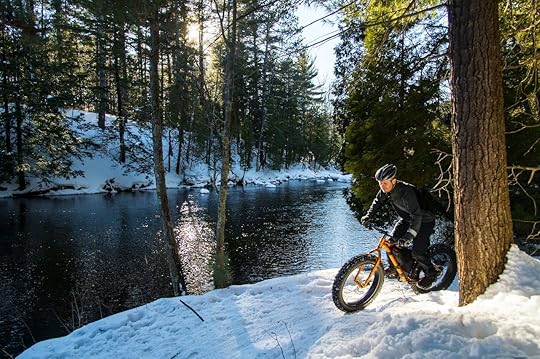
Photo: Aaron Peterson / Travel Marquette
Marquette was early to this scene a decade or so ago, and now it’s easily one of the best fat-biking destinations in the country. The area gets an impressive 150 inches of snowfall annually, and folks here know exactly what to do with it: There’s rock-riding at Harlow Lake, flow-riding on the NTN’s North Trails (plus some nice elevation on the South Trails), and well-maintained, beginner-friendly tracks on the 14-mile RAMBA system.
If you’re new to the sport, remember that the colder, the better. Sunny, blue skies, and 20ºF? That’s a perfect fat-biking day. Head to a rental shop like Lakeshore Bike, and they’ll equip you with all the gear and knowledge you need for a fast-paced day on the trails.
3. Snowshoeing and hiking along sea cliffs and national scenic trails

Photo: Dove Day/North Country Trail Association
You cannot visit Marquette and not check out Presque Isle Park. It’s a 323-acre forested peninsula that extends deep into Lake Superior — when Central Park’s Frederick Law Olmsted was brought in to design this landscape, he uttered three wise words: “Don’t touch it.” His prescience kept this place as wild as can be.
Park at the pavilion, and lace up your boots or strap on your snowshoes. The road that loops the peninsula is closed in winter, so you have free rein of the entire place. The outlooks on the park’s east end sit on high sandstone cliffs — at least make it here to watch the waves pound the shore. You could also head deep into the central forest or to Blackrocks, an unbelievable spot for cliff-diving come summertime.
As if that weren’t enough, you can also catch the North Country National Scenic Trail up here, a 4,600-mile footpath that stretches from North Dakota to Vermont. Unlike its sibling the Appalachian Trail, the NCT sees scant numbers of hikers, especially come winter. It passes right through town and sticks to the shores of Lake Superior.
Sugarloaf Mountain is great for when you’re pressed for time — a quick half-mile climb takes you to the top, where you’ll have views of the lake, town, and the surrounding wilderness.
4. Zooming down, then jumping off that ski hill
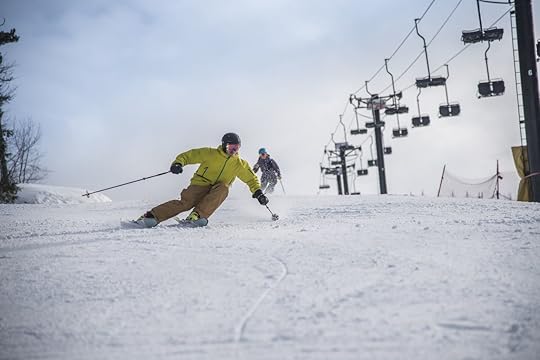
Photo: Aaron Peterson / Travel Marquette
Just three miles from downtown but still surrounded by Northwoods with views of Lake Superior, Marquette Mountain is small-but-mighty: There’s 600 feet of vertical, 169 acres of slopes, and 25 ski trails. The mountain averages 210″ of snow a year, and the longest run is 1.25 miles. Two-day passes will only set you back $99, and it’s open for night-skiing and snowboarding, too.
The Ishpeming Ski Club, though, might be the place that blows past your expectations. Their “Suicide Bowl” has five ski jumps: K13, K25, K40, K60, and the famous K90 Suicide Hill. The volunteers — the club’s a local institution and a labor of love — will teach you how to jump off their 140-foot scaffold, provide any and all equipment, and, of course, keep you safe. You want thrills? You got ’em.
5. Attending your first horse-drawn sleigh-ride party

Photo: Tonja Acker-Richards / Sleighman
Not every wintry moment in Marquette can or should be spent defying the laws of gravity. When you’re feeling cozy, ready to spend a chilly night by the fire with your pod, check out Sleighman’s horse-drawn sleigh rides — or better yet, their sleigh parties. At one of these outdoor, private extravaganzas, there will be continuous rides for small groups through the forest, a bonfire for those waiting their turn, a toboggan hill for those with energy to burn, and a warm shelter for your potluck. Who’s bringing the cocoa crockpot?
And if you’re ready and willing to take the lead, the reins can be yours — after a few lessons, that is — upon request.
6. Hiding in ice caves — or climbing up them
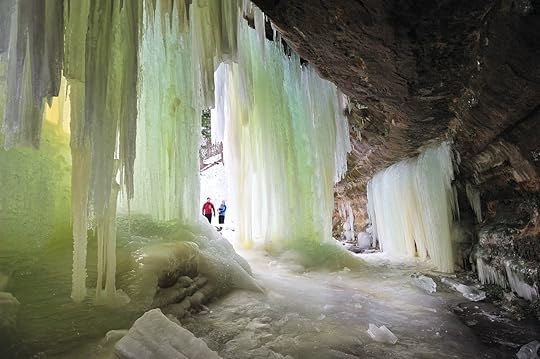
Photo: Shutterstock/John McCormick
Park at the end of Frey Road, slip on your ice cleats, and get walking. It’s .75 mile to a tributary of the Rock River, where melting snow freezes as it falls over a small cliff, forming the ephemeral Eben Ice Caves once the low temps hit. The frozen curtains somehow light up electric-blue in most shades of daylight, forming a wall you can walk under, shielded from the outside world by their icy glow. It’s an experience you might never have anywhere else.
Local’s note: The trek here is half a mile of hills, and the cave’s floor is often slick, so don’t skip the ice cleats. It’s difficult to admire the phenomenon when the ground feels like a Slip ‘N Slide.
For ice you climb up, not under, that’s where a visit to Pictured Rocks National Lakeshore comes in. There are dozens of ice-climbing routes in the area, but The Curtains at Pictured Rocks has captured the most hearts. Beginners (and photographers!), head here. If you’re handy with crampons and picks, check out Dairyland, the “mother of Munising climbs.”
Keep in mind that you’ll likely have to walk on a frozen Lake Superior to get to where you’re going — which truly adds to the experience.
7. Luging with Olympic hopefuls

Photo: Shutterstock/NicoElNino
Say you don’t want to ski, hike, jump, ride, climb, or bike — Marquette still has a wildcard up its sleeve: speed-sliding. The Lucy Hill Luge Track at the Upper Peninsula Luge Club has a 280-foot drop over half a mile, and it’s the only full-length natural luge track in the country. Olympic hopefuls train here, but it’s open to the public, too.
What’s speed-sliding exactly? You steer an old-fashioned wooden sled with your feet and hands (metal runners make sturdy contact with the ice), zooming yourself down an unrefrigerated, boarded hill. Even spectating is a trip! The folks at the club will give you all the instruction you need — all that’s required is to come appropriately dressed and ready for the thrill. 
The post 7 incredible winter experiences in Marquette, MI appeared first on Matador Network.

January 5, 2021
Traveling couples on Instagram
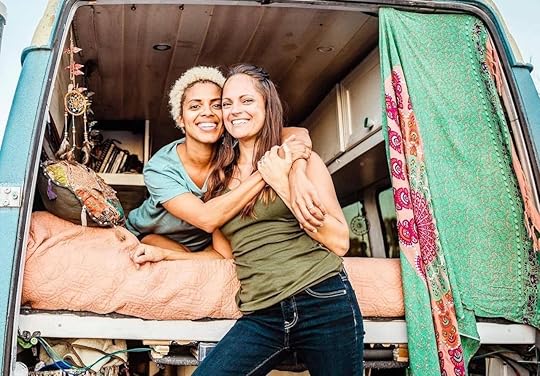
Traveling with your partner can be one of the most rewarding experiences in a relationship. From planning the trip to sharing somewhere new, so many of our best memories of our loved one is taken from on the road. For most of us, these adventures are not as often as we would like, but there are some couples who have made the choice to make travel a lifestyle. It might not always be as glamorous as their Instagram accounts suggest, but these couples below offer some really great tips on how they make this all possible. From those who opt for seeing the world from their van to those who have managed to monetize their travels, here are 10 couples who will inspire you to hit the road with your other half.
1. Chantal and Vernan of RezRoads
View this post on InstagramA post shared by RezRoads (@rezroads_sw)
Chantal and Veran converted a 2018 Ford Transit van and live and work remotely on Navajo Nation land with their six dogs. Their Instagram is informative, sharing their life outdoors and public places in their native homeland. “We were drawn to that life of always being on the road, always being outdoors,” Chantal tells Matador Network. One of the hopes of the couple is to preserve Navajo culture and the language of their ancestors, and they do so by storytelling through their platform. The couple also works with Natives Outdoors, an organization that supports Indigenous people through selling Native products and through education.
2. Abigale and Natalie of Let’s Play Ride and Seek
View this post on InstagramA post shared by ɴᴀᴛ ♡ ᴀʙɪ | ᴠᴀɴʟɪғᴇ ️ (@letsplayrideandseek)
Abigale and Natalie met six years ago and have been vanlifers since they got married a couple of years ago. They have been traveling around North America with their two dogs, Bear and Peluche, who are adorable. Their Instagram is inspiring, and that is one of their missions — to remind us that you can have the life you want and deserve. Their blog has travel tips, recipes, and some great honest guidelines for vanlifers. Abi is a photographer by trade and runs her business remotely from the van.
3. Yuko and Eric of Asobo Life
View this post on InstagramA post shared by YUKO & ERIC | DIY Camper Van (@asobolife)
Yuko and Eric are another vanlife couple that is currently en route to Argentina from Canada. They’re originally from Japan and Hong Kong but decided to sell everything and travel full-time in 2018. Their site, Asobo Life, is a great resource if you are considering vanlife as they cover everything from how to build and kit out a vehicle to the finances you need to fund the lifestyle. Their Instagram is aesthetically pleasing and fun, and it’s worth looking back through their account if you are interested in the journey down the coast of the Americas.
4. Karl and Daan of Couple of Men
View this post on InstagramA post shared by Gay Travel Blog Couple of Men (@coupleofmen)
Karl and Daan are professional travel bloggers touching on subjects such as gay-friendly hotels, restaurants, and bars, and they have super informative gay-travel city guides for the places they have visited. The blog, Couple of Men, also has sections on gay rights, listing out sound resources for gay travelers and offering detailed information on events such as Pride, Gay Ski Weeks, and cruises. Their Instagram documents their travels from places such as Japan, Iceland, Peru, Colombia, Sweden, and the US.
5. Monet and James of The Traveling Child
View this post on InstagramA post shared by The Hambrick Family | Miami (@thetravelingchild)
The Hambrick family consists of Monet, James, Jordyn, and Kennedy, who live by the motto, “If kids live there kids can visit.” The family travels to many places that most might not think are kid-friendly. As well as being super inspiring, the blog, The Traveling Child, offers tips on affordable family travel, advice about how to travel with children in tow, and international destination guides. Their Instagram is engaging, ridiculously cute, and worth a follow if you’d like to see the world one day with your family.
6. Camile and Jean of Backpack Diariez
View this post on InstagramA post shared by CAMILLE & JEAN (@backpackdiariez)
Belgian couple Camile and Jean started their blog a couple of years back after quitting their jobs in London to backpack South America for five months. They have been jetting around the world ever since and share their stories with their 365k followers on Instagram. If you have an interest in how to monetize your social media account or blog, Backpack Diariez is a good place to start as the couple runs a range of courses from photo editing to how to build a successful Instagram account.
7. Laura and Camrin of Free Wheel Drive
View this post on InstagramA post shared by Free.Wheel.Drive (@free.wheel.drive)
Laura and Camrin hail from Milwaukee and have been traveling around North America in a Jeep Grand Cherokee named Tina with a rooftop tent since 2018. Living a sustainable lifestyle is super important to this couple, and they funded a lot of their travels through working on farms around the US. The blog, Free Wheel Drive, has some great tips on hiking in and around the national parks and advice on how to start a life living on the road. Through Instagram, the couple documents their journey from places such as The Grand Canyon to a farm in Arizona.
8. Tina and Cederique of Our Next Location
View this post on InstagramA post shared by & (@ournextlocation)
Vloggers Tina and Cederique met in Belgium in 2017 and have been sharing their travels on their YouTube channel Our Next Location. One of their recent videos offers up their tips on how to keep a relationship healthy, especially on the road. The couple sadly had to cut a recent trip to Japan short due to the pandemic, but their Instagram feed remains busy with inspiring stories from past trips.
9. Amirah and Jarrell of Indefinite Honeymoon
View this post on InstagramA post shared by Amirah J. Cook (@indefinitehoneymoon)
This lovely couple has been documenting their travels since 2013. Full-time writer Amirah and artist Jarrell currently live in Bali and have both started companies that support their lifestyle and journeys. Their site, Indefinite Honeymoon, is a great resource for learning about how to work online — and make money — and Amirah’s Instagram might make you a little jealous if you are sitting at home, but it is a beautiful distraction.
10. Rox and Maartje of Once Upon a Journey
View this post on InstagramA post shared by Rox & Maartje | @onceuponajrny (@onceuponajourney)
Rox and Maartje are currently based in Amsterdam due to the pandemic but started traveling full-time in 2017. The couple is a great resource for lesbians who want to travel, and they make a stance to visit countries regardless if they are well-documented as being LGBTQ-friendly. Together they have visited 45 countries and have cataloged their journey on their Instagram, sharing stories and advice for the LGBTQ community. Their blog Once Upon a Journey has a nice section of interviews with other lesbian travelers, which is worth checking out. 
More like thisLGBTQ TravelWhat is next for LGBTQ travel in 2021?
The post 10 couples who will inspire you to hit the road with your other half appeared first on Matador Network.

How to transfer money abroad

You’re abroad and need cash. But before you ever hit the ATM, there has to be money in your bank account to withdraw. Fortunately, it’s 2021, and gone are the days of traveler’s checks and expensive wire transfers. You can now easily transfer money from one bank account to another or have others back home transfer money to you. The reverse is true as well, of course, in case the need to send money back home arises while you’re on the other side of the world.
Because you can transfer money instantly into foreign currencies, there’s no need to withdraw US dollars from your account at an ATM and convert them or pay inflated currency exchange rates at airports or foreign banks. By taking that step out of the international banking process, these four digital services will help you stay on top of your finances while abroad, from daily expenses like food and lodging to bigger stuff like collecting paychecks and paying bills.
N26
Based in Europe and newly available to US citizens, N26 is a digital-only bank that allows its customers to sidestep many of the traditional roadblocks that make banking while traveling or working abroad a slow, grueling process. From a banking perspective, something like N26 was bound to happen. More people than ever work remotely, and the gig economy has given rise to individuals performing contract work for companies across international borders in sectors such as copywriting, web development, and digital marketing. Some workers who complete their work entirely on a computer even travel or live abroad while performing their work. For these and many other workers in today’s marketplace, traditional banking — optimized for recurring direct deposits and in-person teller visits — was never going to cut it. To make everything from getting paid to accessing money not a complete headache for its customers, they needed a bank ready to think across borders and make everything digital. That’s exactly what N26 did.

Photo: guruXOX/Shutterstock
Because there are no actual N26 locations, everything is done online — including account opening and deposits. From there, customers receive an ATM card ready to be used around the world, as well as easy access to digital payments, money transfers, and a host of other services that used to require, at best, a phone call and, at worst, a visit to the local branch of their bank. And when you get to the ATM to withdraw that cash, you can do so fee-free at more than 55,000 ATMs around the world operated by Allpoint. Customers can track expenses via an app, request or send payments to others, and even set up automated savings that can then be transferred or spent online when you need the money.
For example, let’s say you’re going on an extended trip abroad in which you’ll visit multiple countries. You’ll work remotely from each, collecting a paycheck or invoicing clients much as you would back home. However, your current bank charges a hefty fee at foreign ATMs. N26 alleviates that by not only allowing you to have money deposited into your bank account, but it also lets you withdraw that money free of fees, at least from their end. And you can pull out money in the local currency wherever you are and make a note in your account of what you spent the money on.
Transferwise
Much like N26, Transferwise was built to address a growing gap that has arisen as more people work online and from abroad. Except this service is specifically designed for transferring money across currencies and borders that’s able to be accessed faster than a standard Venmo or PayPal transaction. It also avoids the hefty fees that can accompany PayPal transfers from debit and credit cards.
The Transferwise system allows you to easily transfer money to yourself or anyone else anywhere in the world, as long as they also have a Transferwise account. Exchange across more than 50 currencies at market rate, and the receiver (even if it’s you) gets that money in seconds and can move it to a bank account rapidly. Transferwise actually integrates into the N26 app, meaning you can transfer money to yourself or someone back home all in one place if they have N26, and the money will be available instantly.
If you need to move money between accounts at two different banks, you can do so easily, though note that if you are self-employed or otherwise paying yourself from a business to a personal account, you may need to create two separate Transferwise accounts — one to send and one to receive. Transferwise is even better, though, when moving money between bank accounts located in two different countries, which makes it ideal for travelers who work for a business not located in their home country, or who open an account in another country and want to put money into it.
Xoom
Xoom is a service from PayPal that is similar to Transferwise, though with a slightly higher fee in most cases. But with that fee you gain the ability to transfer money to an account back home or to more than 130 countries with the ability for it to be picked up in cash, much like a wire transfer but cheaper and easier to track. Xoom is particularly useful when traveling in Latin America, as pick up locations are most common there and in the Philippines but far less common in the rest of the world. Still, if you’re in dire need of cash and an ATM isn’t available, Xoom can save the day by allowing you to quickly send money to a nearby pickup location — as long as there is one. In Mexico, for example, OXXO convenience stores are ubiquitous and often serve as pickup spots, as do many common banks. When in doubt, try to find a Walmart — another common Xoom pickup partner. When transferring to yourself you can also use the traditional PayPal method, with an account linked to each of the bank accounts, but the transaction will be susceptible to any applicable fees on either end.
OFX
As a dedicated online money transfer service, OFX is the Western Union of the 21st Century. It has one task, and it does it well — transferring money across borders, outside of a bank’s rates and regulations. Most transfers take one to two business days, but again, you’re avoiding having to visit or use a bank — whether because you don’t have access to one in the place you are or are going to, or because your recipient doesn’t. As far as transferring money to yourself, it doesn’t do anything that other services don’t do, but one big perk is that OFX nearly always transfers currencies at a better rate than banks. You’ll know when your transfer is available and when it’s been received, and you can track the transfer’s progress online through your account. 
More like thisAirports + FlyingAirport lounges aren’t just for rich business travelers. Get in cheap with these tricks.
The post 4 easy ways to transfer money to yourself (or others) while abroad appeared first on Matador Network.

The best states for adventure sports

Adventure might seem hard to come by these days, given all the COVID-19-related restrictions, but there’s actually a ton of opportunity for safe outdoor adventure around the country. From climbing and mountain biking to skydiving and kayaking, the American outdoors have no shortage of exhilarating, adrenaline-fueled sports. The 2021 Adventure Index from Outforia ranks each state’s adventure worthiness based on the number of available activities in 10 categories.
The categories include rock climbing routes, hiking trails, mountain biking trails, kayaking spots, ski resorts, zip lines, surfing spots, caving grottos, skydiving dropzones, and hang gliding locations.
California ranked number one thanks to its over 45,000 adventure activities and a landscape that makes it particularly suitable for adventuring. It has more options for rock climbing, surfing, hiking, skydiving, and hang gliding than any other state.
Colorado came in second, and it’s no surprise why. It’s home to some of the best ski resorts in the world, like Aspen, Vail, Snowmass, and Telluride, and even if you’re not a skier, the entire state is a paradise for outdoor enthusiasts, particularly when it comes to hiking and mountain biking.
New York took the number three spot, thanks to its upstate ski culture. The state has more ski resorts than any other. It also benefited from its abundance of kayaking destinations. The mountainous Catskill and Adirondack regions also helped catapult New York to the top of the list.
You can check the list of all 50 states below to see where your state ranks (spoiler: Kansas is dead last).

2021 Adventure Index Infographic by Outforia 
More like thisClimbingThe 11 hardest, most dangerous mountains to climb in the world
The post The best states for adventure sports, according to hard data appeared first on Matador Network.

New national park in Spain in 2021
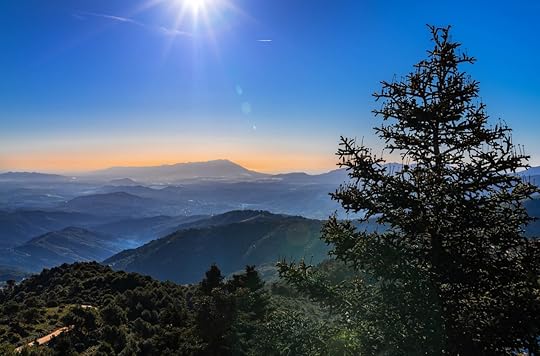
The Sierra de las Nieves in Andalusia, Spain, is the country’s newest national park. Parque Nacional Sierra de las Nieves will be the first national park in the Málaga province and the 16th for the country overall. The mountainous region has been a protected park since 1989, and half of it has been a UNESCO Biosphere Reserve for 25 years. Now, it’s finally getting the national recognition and protection it deserves.
The park is home to a wide range of wildlife, including ibex, roe, deer, otters, and raptors, but it’s particularly noteworthy for its forest of rare ancient Spanish fir (pinsapos). Around 60 percent of the country’s Spanish firs are located within the Sierra de las Nieves.
The national park isn’t just a destination for nature lovers. Culture seekers will spend hours exploring the whitewashed towns of Tolox, Monda, El Burgo, Yunquera, and Ista, and the ruins of crumbled fortresses and other historical buildings.
Funding for the new park will be dedicated to creating visitor centers and other infrastructure to enhance the tourism experience, as well as benefit the local community. Hiking excursions in the mountains, forest walks, cycling, mountain biking, climbing, kayaking, caving, and canyoning will also be made available. 
More like thisBeaches + Islands5 ways to experience the outdoors around Tenerife’s Montaña Roja
The post Spain is getting a new national park in 2021 appeared first on Matador Network.

Southwest’s $29 sale

Southwest is trying to get people excited about travel in 2021 by launching new low fares to kick off the new year. From Hawaii to San Diego, Denver, and New Orleans, there are tons of options throughout the country for your 2021 vacation. The airline is offering fares as low as $29 one way to destinations, as long as you book by January 7 at 1:00 PM ET.
Bill Tierney, Southwest’s vice president of marketing, said in a statement, “Southwest is ready to take Customers to their favorite spring travel destinations. Whether it is hitting the slopes or soaking up the sun on the beach, Southwest is your ticket to the perfect getaway […] we look forward to having our Customers onboard again when they are ready to get away.”
You can fly for as low as $29 one-way between Atlanta and Raleigh/Durham, Denver and Salt Lake City, and Phoenix and Palm Springs; for just $39 between Dallas and New Orleans; $89 between Nashville and Sarasota; and $99 between San Diego and Hawaii.
Advance purchase of at least 21 days is required, and the sale is valid for travel dates from January 26 to May 26. More information and specific details on dates and destinations can be found in Southwest Airlines’ press release. 
More like thisAirports + FlyingHow to plan for 2021 travel in the age of COVID, according to 23 travel agents
The post Southwest is ringing in the new year with fares as low as $29 appeared first on Matador Network.

Matador Network's Blog
- Matador Network's profile
- 6 followers



